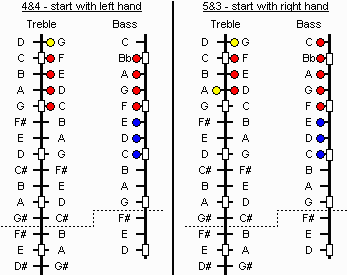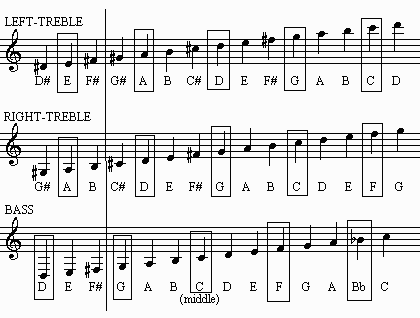
First, here are the notes on a standard dulcimer (15/14 and 12/11) as they appear on a music staff and on the dulcimer. In each of the various keys, you won't usually see the sharp (#) or flat (b) signs directly in front of the notes as they appear here. Instead, each key has its own key signature, which puts all the sharps or flats you need for that key next to the treble clef at the left side of each staff line. Outside of finding your starting point and basic scale patterns, you won't need to worry about key signatures too much on the dulcimer, because when you're in a given key's pattern, you'll only have the notes you need for that key. (This compares to a piano, which has all the other sharps or flats along the way.)
The vertical line that runs through all three music staves is the break point between 15/14 and 12/11; on the dulcimer diagram, it's a dotted line across the bridges. The notes on the music staves with boxes around them are the notes you'll find at the bridge markers.

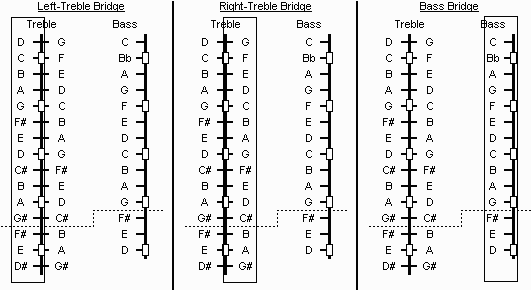
The standard 15/14 dulcimer only has this one full A major scale. If you have a 12/11, this scale is accessible by starting with the A and B near the low end of the bass bridge; from there, follow the red dots on the 6&2 pattern for the rest of the scale. If you start this pattern with your left hand, you should be able to play the full scale in an alternating left-right pattern; think of it as 2&4&2 (my thanks to alert reader Cynthia Mulliken for this).

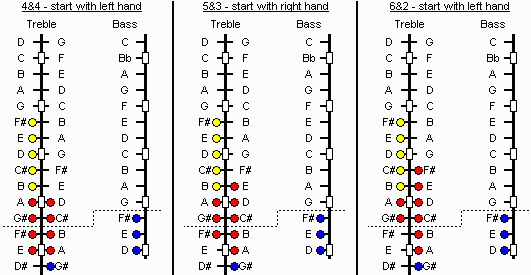
This is one of the most commonly used keys.

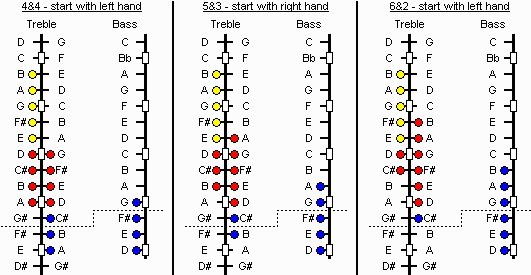
Another very common key, and the one in which you have the greatest range.

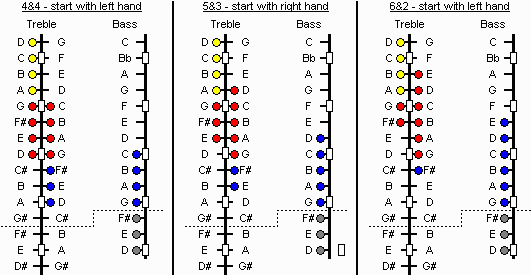
This one is used more than occasionally and will feel a bit strange if you're used to G and D, but the patterns are the same.

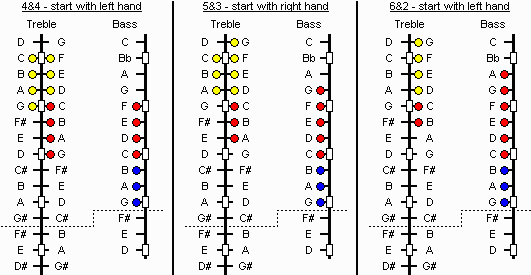
F major is more limited, but still accessible. You really only have one full octave.

